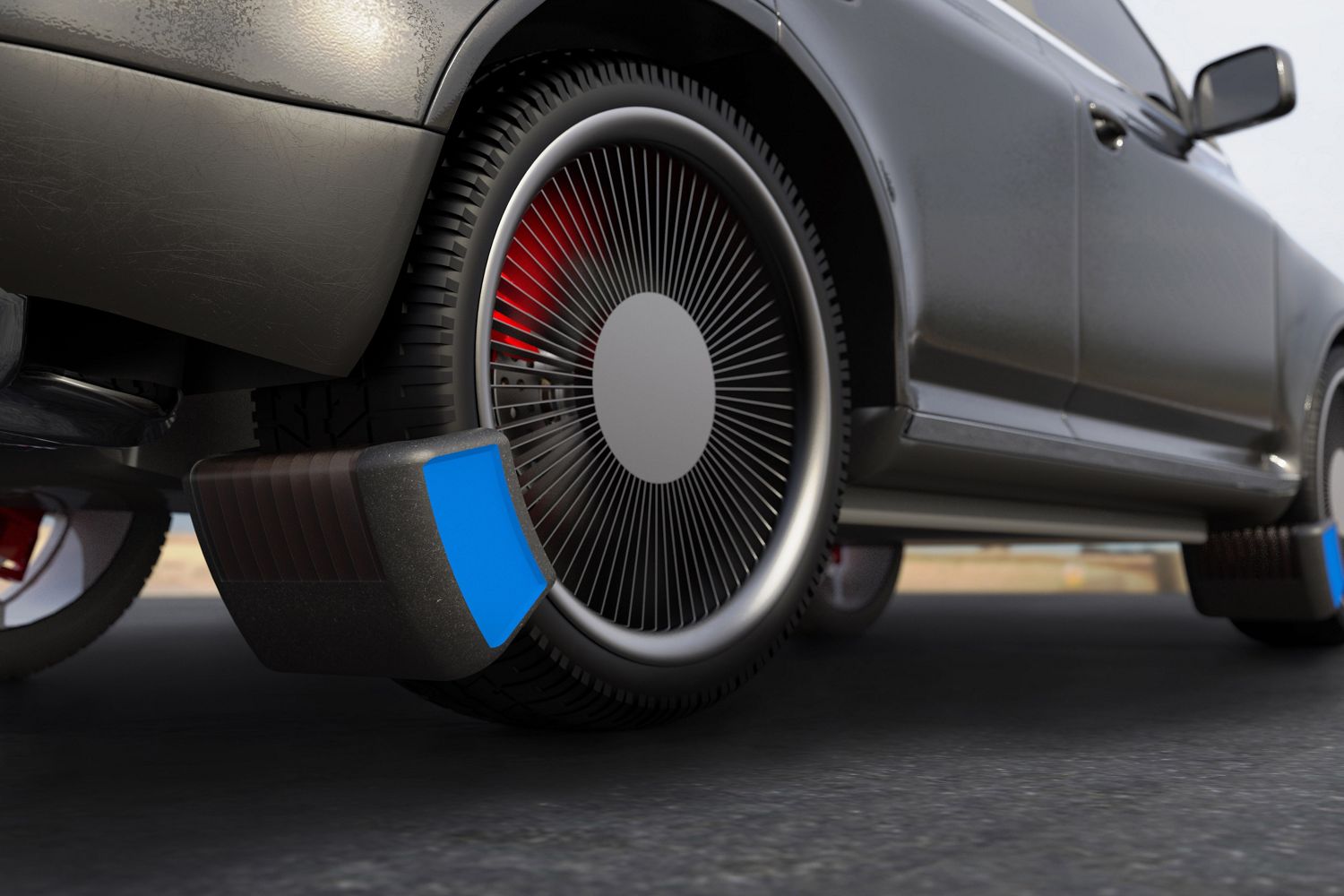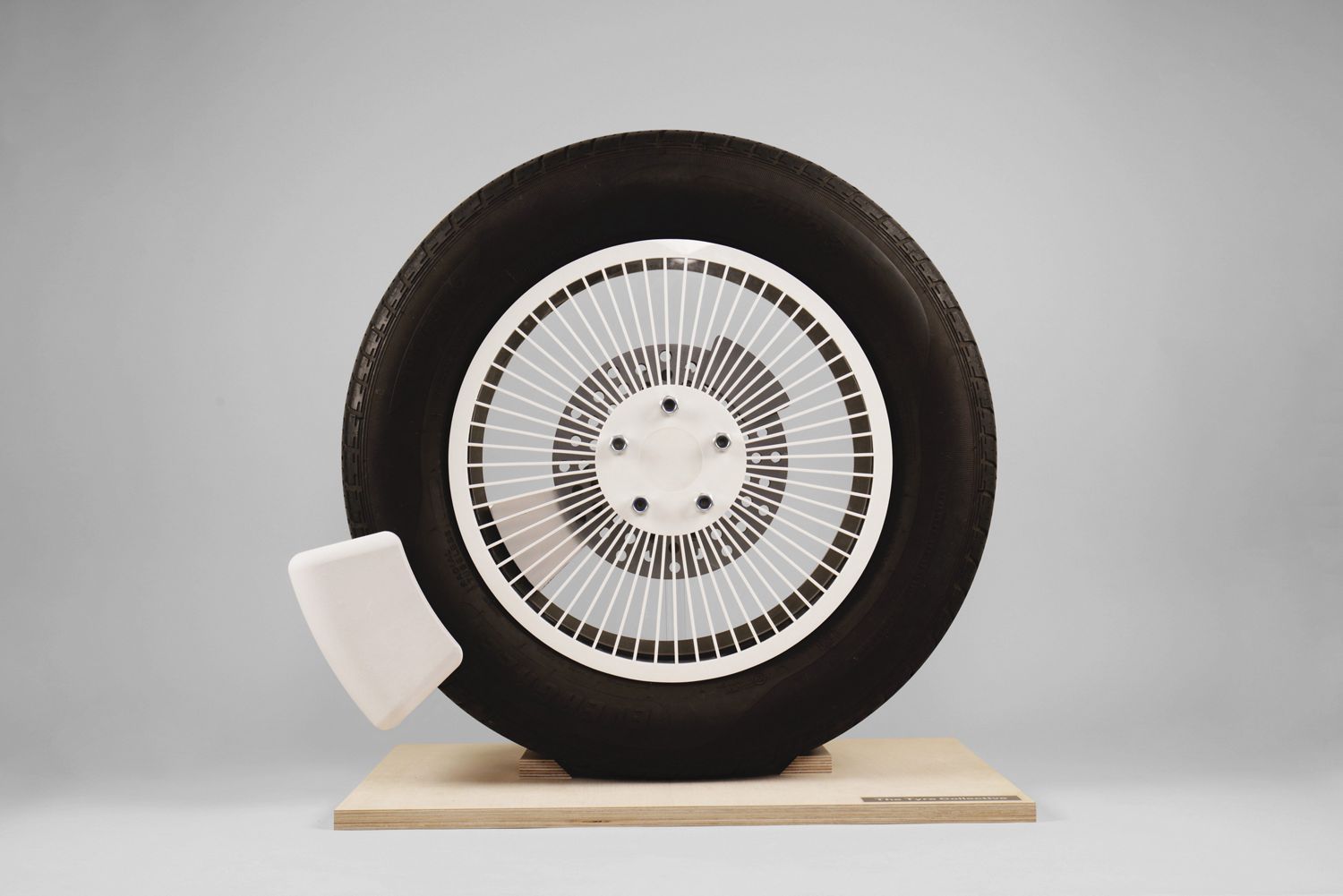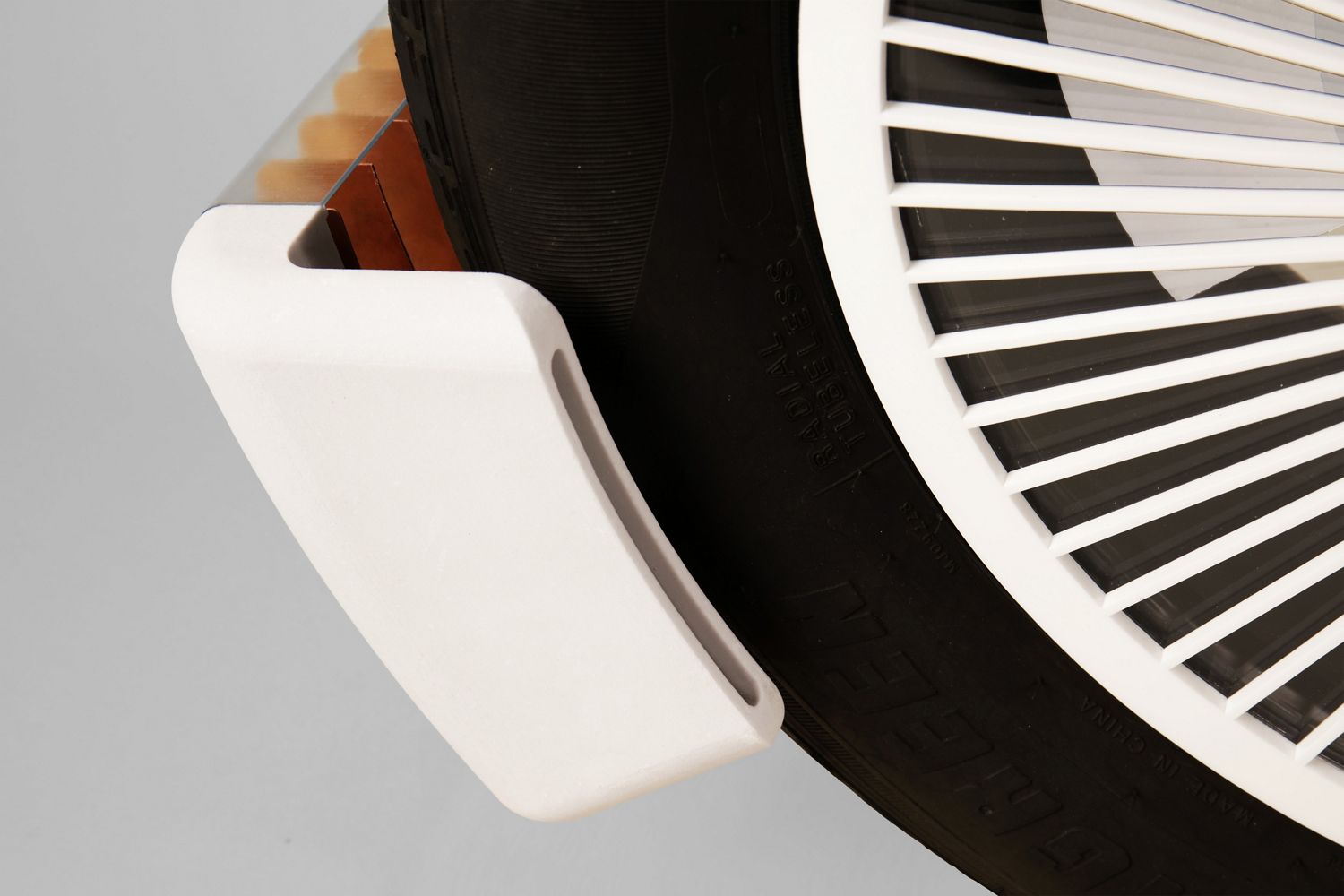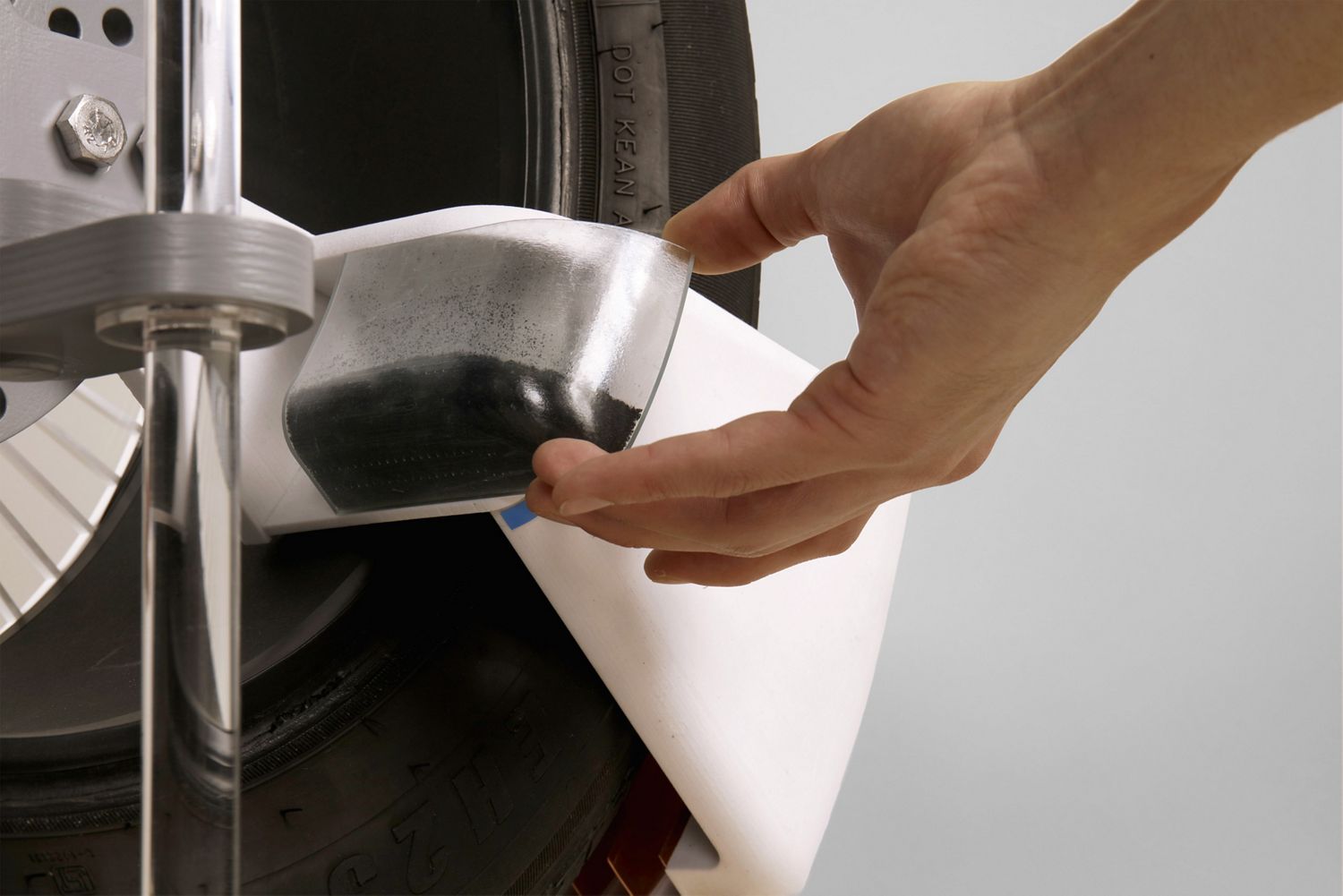-


Tyre’d of plastic pollution? How the second biggest microplastic problem is being solved
September 17 2020
-
Winners of the James Dyson Awards 2020 designed a device to capture tyre particles at the source, which is a major contributor to air and ocean pollution.
- Globally, it is estimated that tyre-wear accounts for nearly half of road transport particulate emissions. It is also the second largest microplastic pollutant in our oceans after single-use plastic.¹
- Today, half a million tonnes of tyre particles are produced annually in Europe alone, from vehicles accelerating, braking and cornering.²
- The problem is only set to get worse. As we move towards electric vehicles, exhaust emissions will reduce but tyre emissions are projected to increase due to heavier batteries.³
- Globally, it is estimated that tyre-wear accounts for nearly half of road transport particulate emissions. It is also the second largest microplastic pollutant in our oceans after single-use plastic.¹
This year’s UK national James Dyson Award winners attempt to solve a relatively unknown problem, tyre wear. Every time a vehicle brakes, accelerates or turns a corner, the tyres wear down and tiny particles become airborne, producing half a million tonnes of tyre particles annually in Europe alone⁴. These particles are small enough to become airborne and can have adverse effect on health. They account for up to 50% of PM2.5 pollution from road transport and will account 10% of all PM2.5 by 2030. More are swept into waterways and oceans, eventually, entering the food chain⁵.
As we move towards electric vehicles in the future, exhaust emissions will reduce but tyre particles will continue to pollute the air and the wider environment⁶. The team estimate that tyre emissions may even increase, as electric vehicles become heavier due to the added battery weight.
The Tyre Collective aims to reduce this invisible pollution by capturing the tyre particles at the source. The team’s device is fitted to the wheel and uses electrostatics to collect particles as they are emitted from the tyres, by taking advantage of various air flows around a spinning wheel. They claim that their prototype can collect 60% of all airborne particles from tyres, under a controlled environment on their test rig.
Once captured, the particles can be recycled and reused in new tyres or other materials such as ink. The Tyre Collective has demonstrated this by printing their business cards using ink made from collected tyre matter. Other creative applications include 3D printing, soundproofing or even in new tyre production, creating a closed loop system.
The Team
The Tyre Collective is made up of students from the Innovation Design Engineering MA/MSc programme, offered jointly by Imperial College London and the Royal College of Art. Siobhan Anderson, Hanson Cheng, M Deepak Mallaya, and Hugo Richardson came together through a passion to try and design for real social and environmental impact.
Hugo says: “As a team, our strength lies in our diversity. We come from all four corners of the globe and bring with us a wealth of knowledge in Mechanical Engineering, Product Design, Architecture and Biomechanics.
“We are passionate about the environment and trying to make a meaningful impact on society. It’s common knowledge that tyres wear down, but nobody seems to think about where it goes, and we were really shocked to discover that tyre particles are the second largest microplastic pollutant in our oceans. At the Tyre Collective we incorporate sustainable and circular values into product design to capture tear wear at the source.
“The ongoing coronavirus pandemic and subsequent lockdowns have proven that clean air is no longer an unachievable dream.”
This year marked the 16th year of the James Dyson Award, and the 16th year of championing ground-breaking concepts in engineering and design. This year, the award has also seen its highest number of entrants in the Award’s history across all 27 participating nations.
-
-
On winning the James Dyson Award, Siobhan says: “We were so thrilled when we found out we’d won the national James Dyson Award. It definitely gives us some validation that our design and concept is something that has real world tangible benefits. We’re excited about having the backing of such a prestigious award and we’re looking forward to continuing this journey and developing our innovation further.”
Sophie Thomas, Circular Economy Specialist and judge on this year’s panel says: “We were unanimously drawn to The Tyre Collective for their creative innovation around this urgent issue of microplastic shedding from tyres. This collaborative, multi-disciplinary team questioned and challenged, building an approach that demonstrates the crucial role of design and enquiry when we search for solutions to these global problems.”
Winning the national leg of the James Dyson Award will inject £2,000 into The Tyre Collectives project. The team aim to commercialise their invention sustainably, using the award money for further research into how their invention can become a global solution to capture tyre wear at the source and prevent it from polluting the wider environment.
The Tyre Collective will progress to the international stage of the James Dyson Award. In the interim, the team are working on securing a patent for this winning design, as well continuing with the InnovationRCA incubator and are continuing the project as a start-up. International prizes will be announced on 19th November 2020.
National Runners-Up
Swimsight
Hugh Johnston – Loughborough University
Problem: According to Britishblindsport.org, 70% of blind individuals did not participate in sport within the last month, with 60% attributing this issue to a lack of provision. Many visually impaired and blind individuals require assistance from a tapper (someone who taps the swimmer to indicate the end of the lane) in order to safely use a public swimming pool.
Solution: Swimsight enables the visually impaired to train independently. The head-mounted computer vision system calculates the user’s position in the lane and proximity to the wall. Corrections are then fed back to the user via an intuitive haptic navigation system.
OFlow
Shawn Navarednam, Kai Jie Chow, Frederick Wong Kui Siung – University of Southampton
Problem: Despite efforts to reduce microplastic pollution, 13 million tonnes of microplastic leak into the ocean every year; mainly originating from landmasses.
Solution: OFlow removes smaller-sized microplastics in water treatment plants by incorporating biofilter and bioreactor technologies. It integrates with current treatment stages to mitigate wastewater microplastic pollution before being discharged into the environment.
- 1 5 6 Department for Environment, Food & Rural Affairs. “Air Quality: Brake, Tyre and Road Surface Wear - Call for Evidence.” GOV.UK, GOV.UK, 10 July 2019.
- 2 3 4 Kole, Pieter Jan, et al. “Wear and Tear of Tyres: A Stealthy Source of Microplastics in the Environment.” International Journal of Environmental Research and Public Health, vol. 14, no. 10, 2017, p. 1265., doi:10.3390/ijerph14101265.








